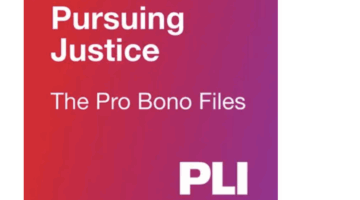 Continuing our series of learnings from the Corporate Legal Operations Consortium (CLOC) annual meeting, where we are sharing highlights on how legal departments are optimizing legal processes and policies, saving millions of dollars and enabling their business clients to do more — faster.
Continuing our series of learnings from the Corporate Legal Operations Consortium (CLOC) annual meeting, where we are sharing highlights on how legal departments are optimizing legal processes and policies, saving millions of dollars and enabling their business clients to do more — faster.
In the contracts-rich legal industry, keeping up to date with electronic signature technology and regulation is vital. Lisa Konie, senior director of legal operations at Adobe Systems, Christina O’Connell, general manager at ThinkSmart, Connie Brenton, chief of staff and director of legal operations at NetApp, and Yuka Tzavaras, senior manager of legal operations and analysis at Electronic Arts, shared essential use cases, best practices, and legal compliance guidelines for electronic signatures. The group urges that electronic signatures can be implemented across organizations of all sizes, resulting in high, quantifiable returns on relatively low investments of time and resources.
Pilot Program: According to Konie, Adobe first implemented electronic signatures in human resources. This immediately saved the company a significant amount of money when they no longer had to FedEx hiring documents to potential employees. “The impact was quantifiable, substantial, immediate, and successful. It was a perfect place to pilot the electronic signature software,” Konie observes. “It unified the company around the ease of implementation and high return on investment.” Today, Adobe actually owns the technology, Adobe Sign, formerly known as Echosign, one of the premier electronic signature products. The company has dedicated attorneys who support and make CLE presentations to help legal departments and business units understand the benefits and efficiencies of implementing electronic signatures.

How Innovative Legal Teams Are Turning AI From Promise To Practice
In recent years, AI has moved beyond speculation in the legal industry. What used to be hypothetical is now very real.
Yes, It’s Legal: NetApp, according to Brenton, implemented electronic signatures four years ago. “When we started, we were told it was illegal. We then then researched and figured out that the answer on its legality is that ‘it depends,’ as is the case with most legal questions,” she explains. “It turns out that it depends on jurisdiction and agreement type.” Eventually, the benefits seemed to outweigh any drawbacks. “As we talked to the providers and had Adobe and DocuSign GCs come in to present, we also saw the technology’s potential and the many opportunities and efficiencies of electronic signatures,” says Brenton. “We got over the hump. It was clear that in the US there is almost no case where we can’t use electronic signatures.”
Low Hanging Fruit: In a bold move, the NetApp legal team invested a full week, right before the sales kickoff meeting, to set up electronic signature capability for NDAs. “The goal was to start with high volume, low risk use cases in the US,” Brenton explains. “We observed immediate, quantifiable, and significant results.” After implementation, it was clear that electronic signatures were a vast improvement over previous solutions. “It quickly became apparent that in the past, NDAs were not moving at the speed of business,” she adds. “The process took three to five days, but our business partners needed NDAs in front of customers in their offices, as they were presenting. They needed us to reduce the cycle time from days to just minutes.” Tzavaras echoes this sentiment and advises companies to start with “low hanging fruit” like NDAs or internal documents, rather than immediately experimenting with high-stakes contracts. She also explains that it is very important to select a service provider who partners with and educates you. Tzavaras recommends enlisting representatives from different business units to help.
Saving Millions: Today, electronically signing NDAs has become a self-service technology solution at NetApp, that can be used wherever and whenever the company needs it. The general counsel has even pre-signed NDA forms to avoid waiting for countersignatures. According to Brenton, this automated process has improved governance and reduced the number of NDAs that went unsigned. “All in all, it saves about $2.9 million every year,” she says. “It was easy to set up, easy to measure, and led to significant ROI.” Electronic signature solutions have spread across NetApp. “We have now expanded electronic signatures to twenty-eight use cases across twelve business units,” Brenton says. “And in the process, the legal team looked innovative. It really was a win-win for everyone.”
Useful Metrics: During the process of implementing electronic signatures, NetApp also gained a lot of metrics and useful data. The legal team was able to better understand what, when, and why documents were signed. “We realized that we had fifteen different versions of the NDA. Over time, we reduced it to three versions, which simplified the process significantly,” Brenton shares. “Also, as we implemented electronic signature processes across the company, we were able to build closer ties with other business units. We now have legal allies and evangelists in other business units.”

Pursuing The Pro Bono Story: A Conversation With Alicia Aiken
This Pro Bono Week, get inspired to give back with PLI’s Pursuing Justice: The Pro Bono Files, a one-of-a-kind podcast hosted by Alicia Aiken.
Optimizing Technology Even Further: By 2016, about twenty-seven thousand Electronic Arts documents had been signed electronically. “It absolutely transformed the way we do business,” Tzavaras explains. However, Tzavaras wasn’t ready to stop there. She especially loves the widget solution on Adobe Sign, which allows users to create a template and share the URL with business partners so the document can be signed at any time. She observes, “You don’t need to be an attorney to set this up. I am certainly not an attorney. The vendors were very helpful and take care of you.” She continues, “We have now automated numerous internal and external processes and have seen numerous savings in the process.”
According to Tzavaras, Electronic Arts “went from many templates that needed to be countersigned, to just three, that no longer needed to be countersigned.” So, if you haven’t implemented this technology in your department, what are you waiting for? As the three use cases demonstrate, Konie, Brenton, and Tzavaras were able to transform their business and experience great returns on their minimal investments. And the change has been addictive – Tzavaras is already urging companies to be even more creative with electronic signature technology and leverage it for approvals, not just signatures.
Olga V. Mack and Katia Bloom are startup enthusiasts who embrace the current disruption to the legal profession. Long gone are the days when in-house legal departments simply manage outside counsel or provide services. Today’s legal department is a sophisticated business unit that co-manages the company’s bottom line, embraces technology, and analyzes risks constructively. Mack and Bloom love this change and are dedicated to improving and shaping the future of the legal profession. Together they passionately collect and share inspiring stories of legal leaders who are thriving through the ongoing tectonic shift. Mack and Bloom are convinced that the legal profession will emerge from this revolution even stronger, more resilient, and inclusive than before. They are currently co-authoring a manual of the skills and traits lawyers need to succeed in — and even enjoy — today’s rapidly evolving in-house legal departments. You can reach them at [email protected] and [email protected] or @olgavmack and @bloomkatia on Twitter.